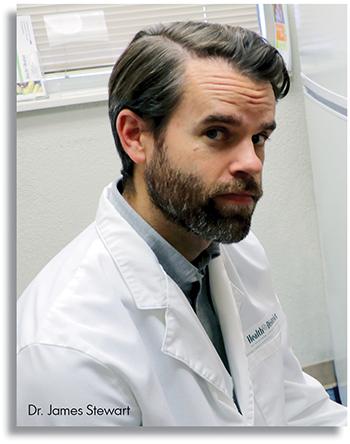What lies ahead with COVID-19
 An interview with Health District medical director Dr. James Stewart
An interview with Health District medical director Dr. James Stewart
In this interview, the Health District’s medical director talks about the continuing threat of COVID-19 and why it is important to maintain a “I protect you, you protect me” approach to keeping our community healthy.
Is coronavirus still in our community?
Absolutely. Although we have experienced some decline in the rate of spread and the number of cases locally, other states have recently seen sharp rises. It is very much still here, and its presence is expected to fluctuate widely over time.
If the number of infections is going down, do we still need to take precautions?
The important thing to remember is the reason the numbers have gone down is because of all the strict precautions we put in place and not because the virus decided it didn’t want to be around any longer. It’s because we were staying home, we were social distancing, we were wearing masks, and we were washing hands religiously. If we loosen up, we see the same thing we saw back in March, which is an increase in spread. The big risk is that we overwhelm our hospital system so that it can no longer meet the needs of the community.
How long will we have to social distance?
Our best estimate is that 90-95 percent of us are still vulnerable to the disease. If we are exposed, we are at risk. Until there is a vaccine, social distancing is the only way we have—along with masks and respiratory hygiene measures (coughing or sneezing into a mask or tissue)—to keep the curve flat. So it’s very important for the foreseeable future.
If I don’t have any risk factors for COVID-19, do I need to practice any precautions?
We’ve learned that even young, healthy people can get very sick. We’ve seen young adults die from this. Even in children, we’re learning that there can be severe vascular consequences from COVID-19. Although kids and young adults are generally safer than older people, this is not a risk that anyone should take.
We’re all in this together. If we want our neighbors to help protect us and the people we care about, then we have to do our part to protect our neighbors and the people in the community who are more vulnerable.
Is it safe to socialize with others?
For the most part, I think it’s relatively safe to see people in small groups if you’re outside, you wear a mask, and you keep your distance. It’s not without risk, but the vast majority of cases are spread through indoor exposures. Obviously make sure that if you have any symptoms consistent with COVID-19 that you don’t socialize or go out in public. People who are at highest risk for complications from COVID-19 (65 and over, and certain underlying health conditions) are encouraged to stay home. If they socialize, they should take extreme precautions.
Does wearing a mask really protect me or others from coronavirus?
There has been a lot of recent research that masks are effective, and that even cloth masks are effective. If a large proportion of society is doing a good job of wearing masks, it’s thought that this measure alone could keep the curve flat for a long period of time.
Isn’t this just like the flu?
We know that COVID-19 is 5-10 times more deadly than the flu, maybe more. In less than four months, we’ve seen it spread and kill more than 130,000 people in the United States. If this were to run its course without a vaccine, you’re looking at maybe anywhere from 800,000 to a couple of million people dying over 18 months. Those numbers are startling. And COVID-19 patients with an underlying condition are 6 times as likely to be hospitalized and 12 times as likely to die, compared with those who have no such condition, according to the Centers for Disease Control and Prevention.
Another difference is that, unlike COVID-19, we have a vaccine for the flu and many people have immunity to different strains of flu.
Also important is how this virus has disproportionately affected marginalized communities. A lot of the outbreaks have been in prisons and in low-income jobs, meat-packing plants especially. And in communities of black and brown people, people have been dying in disproportionate numbers.
Will we have another wave of cases?
It’s difficult to predict, but a number of infectious disease experts and epidemiologists who have been looking at this closely say cases are likely to go up and down, depending on how we all act, and that it is very likely that we will have another surge of cases that will coincide with cold and flu season.